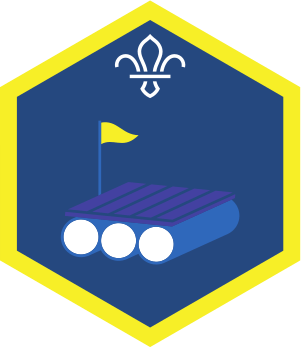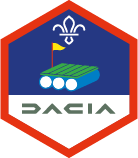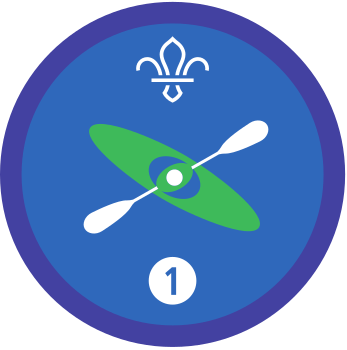Dragon boating
What to expect
Modern dragon boating involves teams up of to 20 paddlers sat in two lines. The paddlers face forwards, and use a paddle with one blade to move their craft. They make sure they’re paddling in time by following a drummer sitting on the front of the craft. There’s also someone who steers the craft from the back, they might be called a ‘helm’ or a ‘steersperson’.
Dragon boating relies on everyone working together to stay in time so they can zoom across the finish line as soon as possible. It’s great fun to enter a competition, but dragon boating’s also a chance to stay active and develop your fitness.
Fun facts
Dragon boating in China dates back more than 2,500 years – it has a rich background in ceremonial and religious traditions. Boats are often decorated to look like Chinese dragons with beautiful heads and tails.
Handy hints
- Take a change of clothes. With up to 20 people paddling at once, you’ll almost definitely get splashed. Don’t forget your towel – and a spare pair of shoes is especially handy.
- Grab some sunscreen. There’s not a lot of shade when you’re out on the water, and the sunlight will reflect off the water and bounce back at you. You’ll probably still need sunscreen on some cloudier days.
Before you get stuck into dragon boating, practise the commands so you know what to expect and don’t waste any time when you’re out on the water. Paddlers need to know and understand the British Dragon Boat Racing Association (BDA) starting commands. When they’re in the boat on the water, they’ll need to listen out for three commands:
- Are you ready? Any paddlers who aren’t ready should say something now.
- Attention. Everyone should get into the paddle position.
- Go. Everyone should start to paddle.
Crew members need to know and understand the BDA paddling commands:
- Go. Start to paddle.
- Brace the boat. Everyone should stop the boat from rocking from side to side by holding their paddle out over the water with the blade flat on the surface. This will brace the boat laterally – you can take it a step further by asking the paddlers on each side of the boat to lean outwards as they put their paddle on the water.
- Stop paddling. Everyone should stop all paddling. They should put their paddles in the flat paddle position so the boat continues to move slowly.
- Stop the boat. Everyone should do a reverse stroke to stop the boat quickly. This means they’ll put the paddle into the water behind them and pull it forwards (towards their toes).
Come up with a creative way for everyone to practise the commands before you give dragon boating a go. You could play a game with the commands, for example, you come up with actions people do when you call out each command, or people could run to different corners of the room for different commands.
- You’ll also need to make sure that everyone’s familiar with the ‘buddy, buddy’ system before they take to the water in a dragon boat. You’ll use the system if you capsize – it’s a quick check to make sure that everyone in the boat’s accounted for.
- Before people are told they can board the boat, number each pair of seats, starting with number one at the bow of the boat and going all the way back to the stern. The first pair should group with the drummer, and the last pair should group with the helm, so there’ll be two groups of three.
- If the team ends up in the water, each paddler should look out for their buddy – the person sat on the same bench as them (plus the drummer or helm if they’re in a group of three).
- The helm should start a number roll call by saying ‘number one, are you there?’. The first pair should respond by saying ‘number one, here!’. The helm should continue to count the numbers until they reach the back of the boat and everyone’s accounted for – it should only take a few moments.
- It’s a good idea to practise the system (and the roll call) in your meeting place before you head out for a session of dragon boating so everyone knows what to expect. The fact that it’s fun to act out a capsize while you’re safe on dry land is a bonus.
Safety
You must always:
- Complete a risk assessment
- Have the right ratios of number of adults to provide suitable supervision
- Set up an InTouch process
- Know what to do in an emergency
- Share information with parents and carers with an activity information form
- Get approval from your commissioner
Be safe outdoors:
- Check the weather forecast
Be safe in water:
Everyone should be able to swim 50 m wearing the clothing or equipment for the activity. Non-swimmers will need additional support.
Water can be dangerous - be aware of the risks.
The category of water depends on how safe the water is. Use our waterways directory to check.
Be sure to manage the group when near water, keeping everyone safe.
Make sure that all equipment is fit for purpose and in good condition:
Everyone must wear a life jacket or buoyancy aid.
The instructor must make sure boats are seaworthy.
There are regulations you must follow if you are hiring a boat.
Joint activities with other organisations:
- This activity can be run jointly with Girlguiding.
- This activity can be run with other organisations.
This activity can be led by you or someone else in Scouts:
The activity leader must have an adventurous activities permit with the right level and permissions for your group.
You don't need a permit for activities on Class C waters (safe, inland water less than 100 m wide).
Where the group is entirely members over the age of 18 the permit scheme does not apply, please follow the rule 9.8 adult groups.
You can go to a centre or use an activity leader who is not part of Scouting:
You must find a suitable provider who meets the following requirements:- The centre/instructor should hold one of these: (If the provider is AALA exempt)
- British Dragon Boat Racing Association - Qualified to the appropriate level as specified by the BDA
The provider must have public liability insurance.
Guidance
Reflection
Dragon boating’s an adventure that needs everyone to work as a team. Everyone had to listen to the drummer and work together to stay in time and keep the craft moving forwards. Was it important to have someone guiding the team? Was it easy to listen to the drummer? What roles did different people play in the team? It can be as difficult to be a team player as it is to lead a team well. What other situations need great leaders and great team players? People should try to think about examples of adventures as well as less active examples, such as businesses.
Dragon boating was also a fun way to be active. Did anyone find dragon boating hard work? What sort of actions did dragon boating need? Which body parts did people work really hard to keep the craft moving? How did they feel afterwards?
- Dragon boating can often be adapted so more people can give it a go. Many outdoor centres have facilities that cater for people with additional needs and experienced instructors to help everyone achieve their goals. Get in touch with your local provider to chat through the needs of people in your group – make sure you give them plenty of notice.
- People of all genders can take part in dragon boating together, in the same boat.
- The British Dragon Boat Racing Association (The BDA) has some information about their Paradragons.
All Scout activities should be inclusive and accessible.
If people enjoyed the thrill of dragon boating, there are plenty of other paddle sports they could try. Why not give traditional rafting a go, and build your own craft before you get on the water? You could even try white water rafting for an extra adrenaline rush.
If anyone especially enjoyed dragon boating, encourage them to develop their skills and look into achieving a permit. They could also check out a local team or club, details can be found here on the BDA’s club finder.



